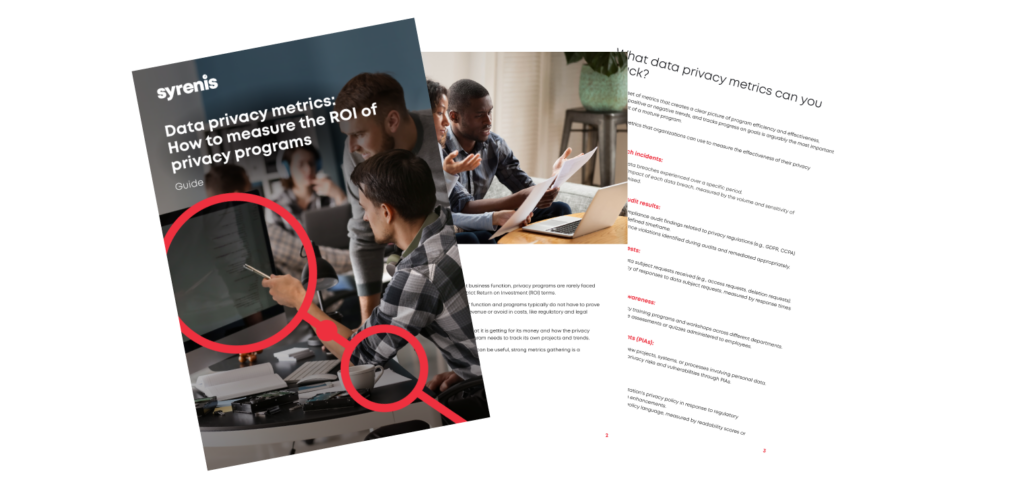There is a marketing conundrum. In the online world, data is the fuel that powers effective and efficient marketing. High-quality data enables better targeting, lower costs, and stronger ROI. Poor or limited data, on the other hand, leads to wasted spend and weaker results.
However, marketers cannot collect or use good data without strong privacy and security practices. Effective marketing depends on trustworthy data handling, and equally, good privacy and security depend on marketing’s understanding of consumer needs and alignment with business goals.
This interdependence creates both a challenge and an opportunity. How can marketing and data protection teams work together to build customer trust, ensure compliance, and drive performance? This article explores that question and outlines three strategies to strengthen collaboration between marketing and privacy teams.
- Why privacy and marketing need each other
- Create joint KPIs
- Conduct joint audits
- Integrate tools and reporting
- Building a culture of collaboration
Why privacy and marketing need each other
There is a growing body of research that highlights the tension between marketing and data protection. For example, a KPMG study revealed that:
- 70% of businesses surveyed increased their personal data collection from customers.
- 86% of individuals report privacy as a growing concern.
- 40% of respondents do not trust companies to use their personal data ethically.
- 62% of businesses believe they should do more to improve their data protection practices.
Customers clearly care about how their personal data is collected and used. According to a McKinsey study, only about 10% of consumers trust consumer-packaged goods or media and entertainment companies on privacy. 87% of customers said they would not do business with a company if they had security concerns. Those who continue to do business with such companies may not engage fully, provide minimal information, or even give false details to protect themselves.
Even the best privacy and security programs cannot operate effectively without input from marketing and other stakeholders. Marketing plays an essential role in several key areas:
- Designing customer-facing privacy experiences, such as consent and preference interfaces, that align with brand tone and user expectations.
- Helping privacy and security teams understand business priorities, ensuring that compliance efforts support company goals.
- Demonstrating how privacy contributes to customer trust, engagement, and ultimately, business growth.
The question is not whether privacy and marketing influence one another, but how they can work together to demonstrate a shared commitment to data protection and earn customer trust. The following sections explore three practical strategies to make that collaboration happen.
Create joint KPIs
Every department in an organization ultimately works toward the same goal: driving ethical and sustainable business growth. For marketing and data protection, that shared purpose is closely aligned.
Marketing teams depend on reliable, consented data to deliver effective campaigns. Privacy and security teams aim to make that data available for business use while ensuring compliance and maintaining customer confidence.
This overlap makes joint KPIs a logical next step. The saying “you are what you measure” applies here: when departments share success metrics, they naturally align their actions and priorities.
Examples of potential shared KPIs include:
- Percentage of customer data collected with valid consent
- Reduction in customer opt-outs or data complaints
- Improvements in consent conversion or preference management rates
- Increases in customer trust or satisfaction scores related to data handling
Shared KPIs encourage collaboration, create transparency, and position privacy as a business enabler rather than a barrier.
Conduct joint audits
While privacy is about more than compliance, compliance remains a critical foundation. Marketing plays a central role in privacy compliance, particularly when it comes to consent and preference management.
Joint audits between marketing and privacy teams can demystify how data is collected, stored, and processed. Reviewing these practices together – from front-end consent experiences to back-end management – helps both functions identify strengths, address weaknesses, and align on priorities.
Joint audits offer several benefits:
- Better understanding of how customer data flows through systems
- Greater alignment between regulatory requirements and marketing operations
- Opportunities to recognize and share success stories across teams
These audits also help both sides appreciate each other’s challenges and build stronger internal partnerships focused on transparency and customer trust.
Integrate tools and reporting
Technology can bridge gaps between functions, but it can also create silos. When marketing and privacy teams use separate tools for data collection, consent management, or reporting, inconsistencies in definitions and outputs are almost guaranteed.
This disconnect can lead to miscommunication, conflicting data, and even compliance risks. To prevent this, organizations should consider shared or integrated tools that enable both marketing and privacy teams to work from the same data foundation.
Benefits of shared tools and reporting include:
- Consistent definitions and consent rules across departments
- Unified visibility into data flows and customer preferences
- Clearer reporting that connects privacy compliance to marketing outcomes
Integrated systems foster alignment, reduce misunderstandings, and make it easier to measure success against shared KPIs and audit outcomes.
Building a culture of collaboration
Successful, data-driven marketing depends on customer trust, and that trust depends on cooperation between marketing and data protection. When both teams share KPIs, conduct audits together, and use integrated tools, they build a privacy-first culture that benefits customers, regulators, and the business alike.
In the end, consent truly is a team sport. Organizations that recognize this and invest in cross-functional collaboration will not only improve compliance but also earn the trust and loyalty that drive long-term success.


